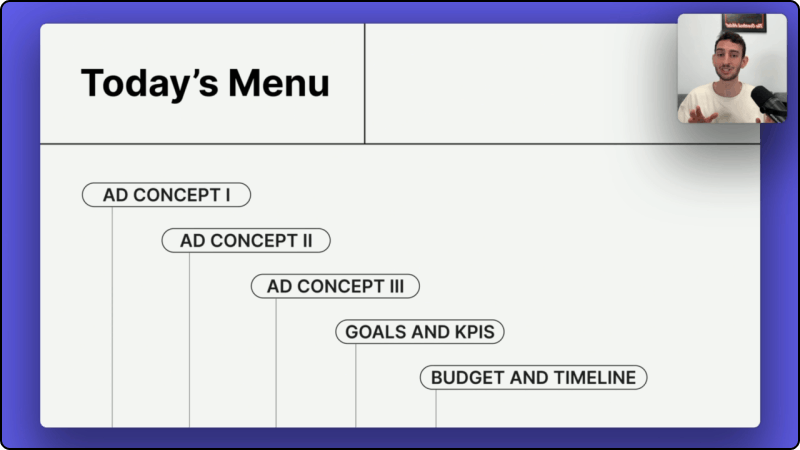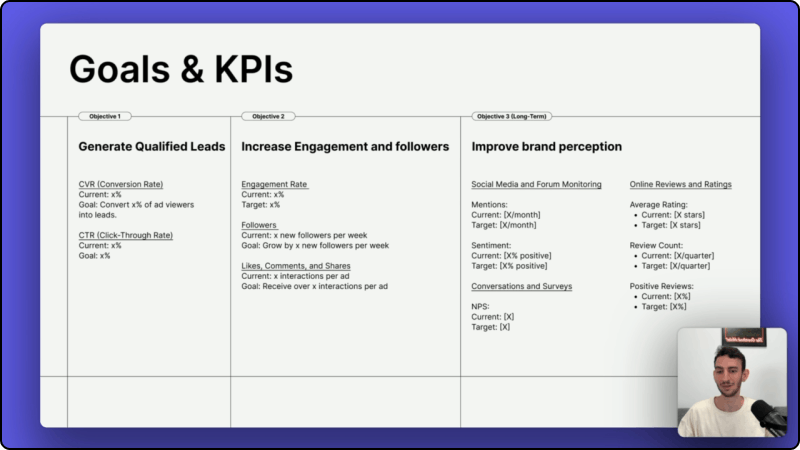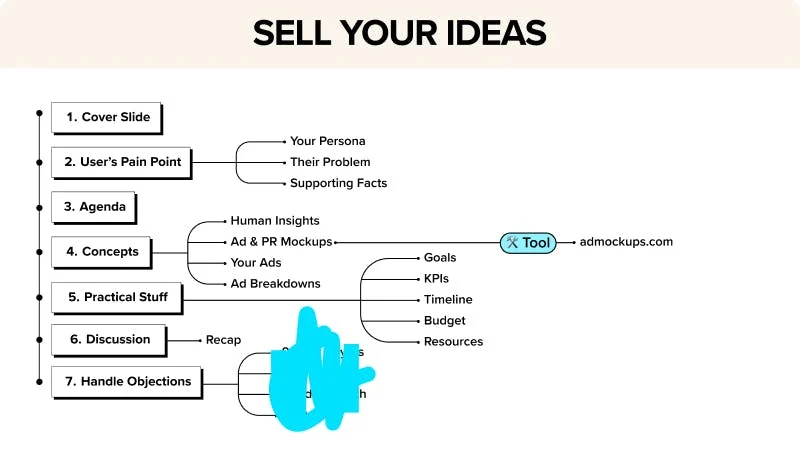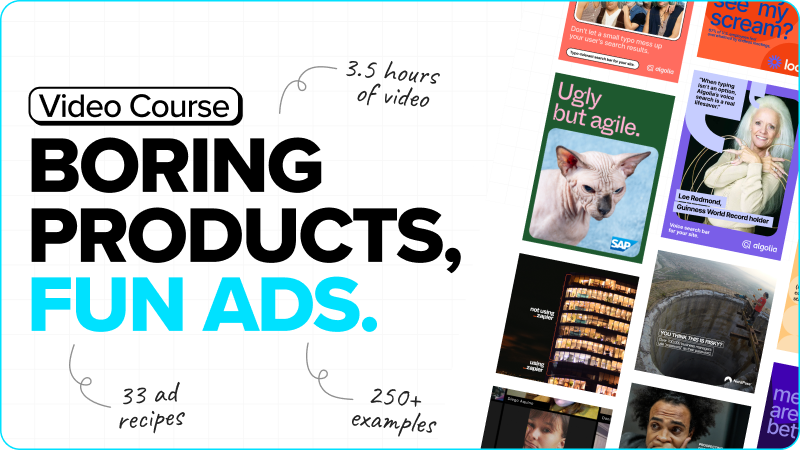Usually, fun ads don’t die because they underperform. They die because the CMO won’t even agree to test them.
So I use this presentation framework to convince executives to run my weird ads:
1. Cover (1 slide)
Campaign name, client logo, and date.
2. User’s Pain Point (3 slides)
I like to start with: “You know, it’s just not fair.” Then, I explain what our persona is going through:
- Persona (Name, photo, and basic facts)
- Their Problem (The product should be the solution)
- Supporting Facts (Press articles, Tweets, Reddit comments that prove this pain is real)
3. Agenda (1 Slide)
I show them what’s on the menu. Usually, it’s:

4. Concepts (4 slides per concept)
For each idea, I present:
- Concept name
- Human Insight: What makes these ads relatable?
- My ads (mocked up → I use admockups.com)
- Ad Breakdown: I explain why I believe this concept is going to work
- Press mockups (Optional)
5. Practical Stuff (3 slides)
Then, I go over:
- Budget & Resources: What we’ll need to make this campaign happen.
- Timeline
- Goals & KPIs: Long and short-term objectives.

6. Discussion (1 slide)
Next, I recap my ads and take questions. If everything goes well, they’ll pick their favorites, and we’ll move on. But if not…
7. Handle Objections (~5 slides)
In this part, I try to predict their objections and address them.

And in my course, Boring Products, Fun Ads, you’ll get:
- My answers to the most common B2B client objections.
- A video where I walk you through my pitching process.
- My pitch deck template (Figma/Google Slides).

And this framework works — ask the tech CEOs who worked with me 😉

“He developed some of the best ads we’ve ever run on LinkedIn!“
— Otto Hanson, CEO & Founder @ TermScout & Screens




